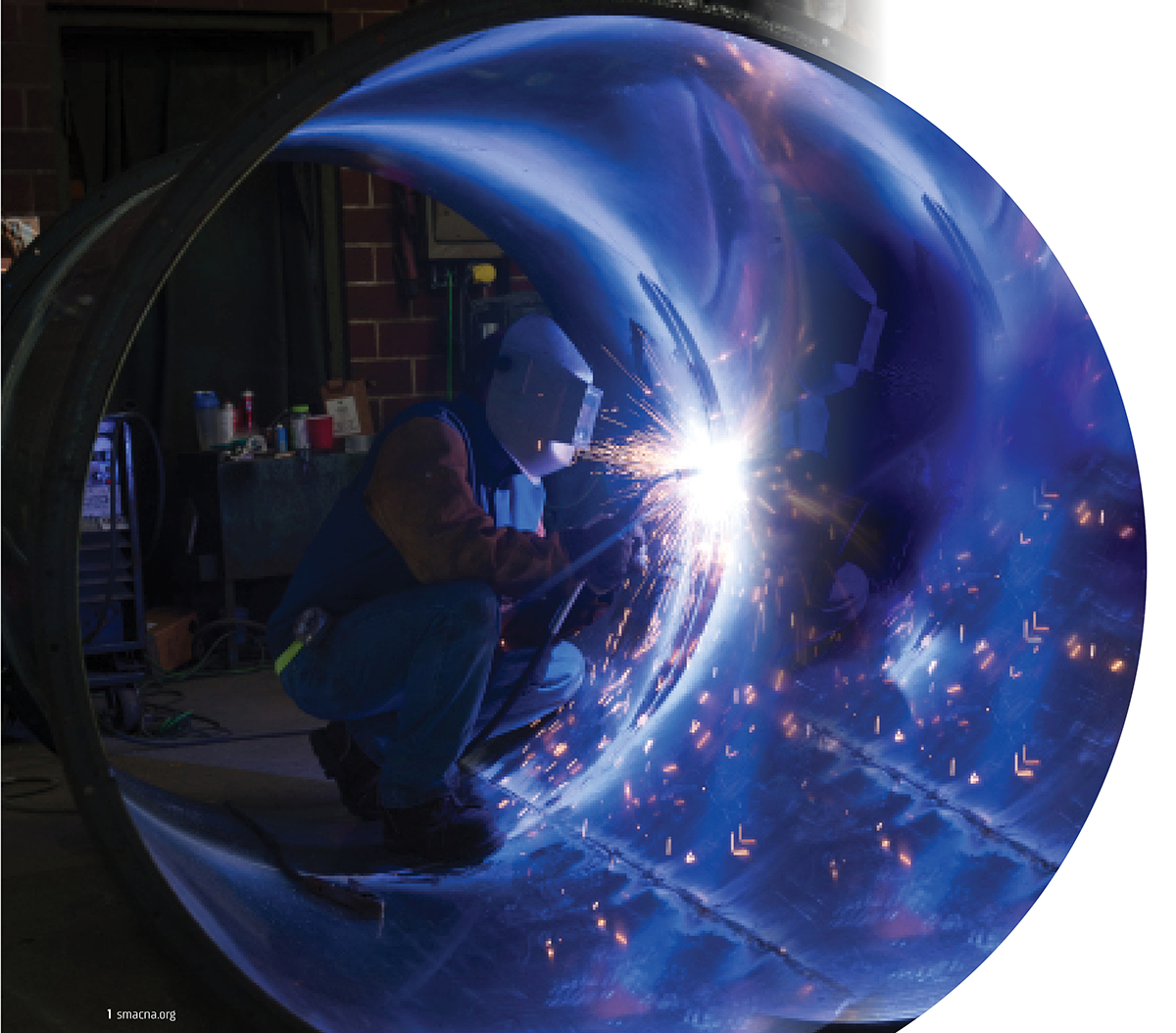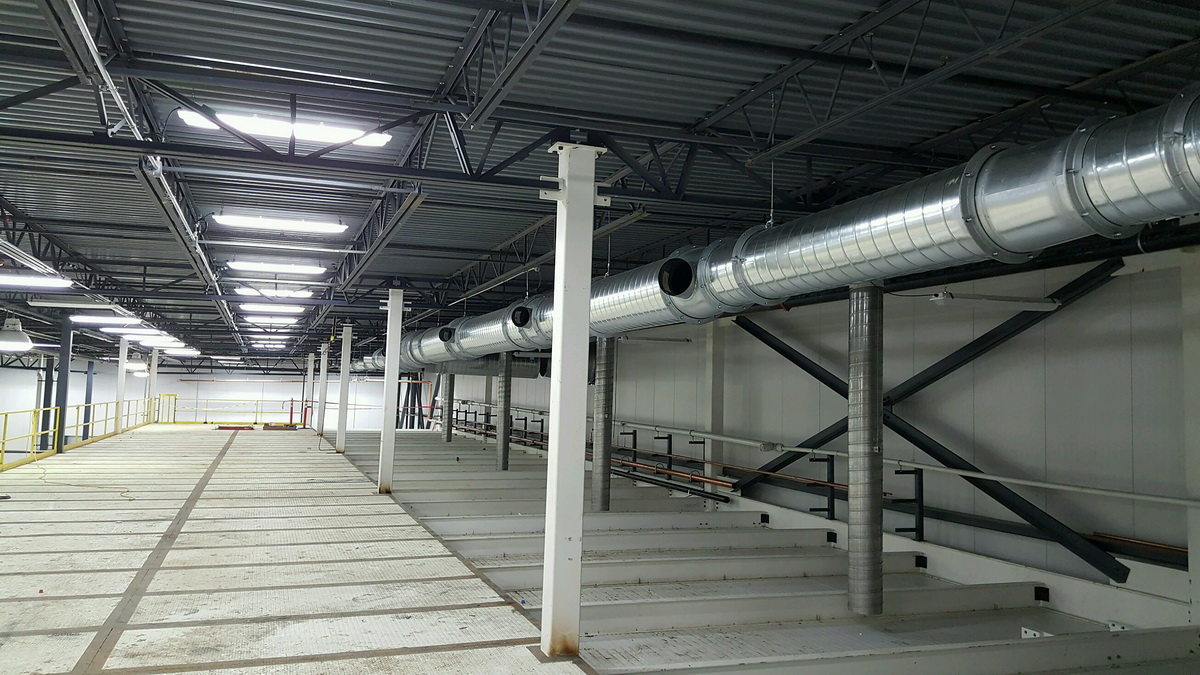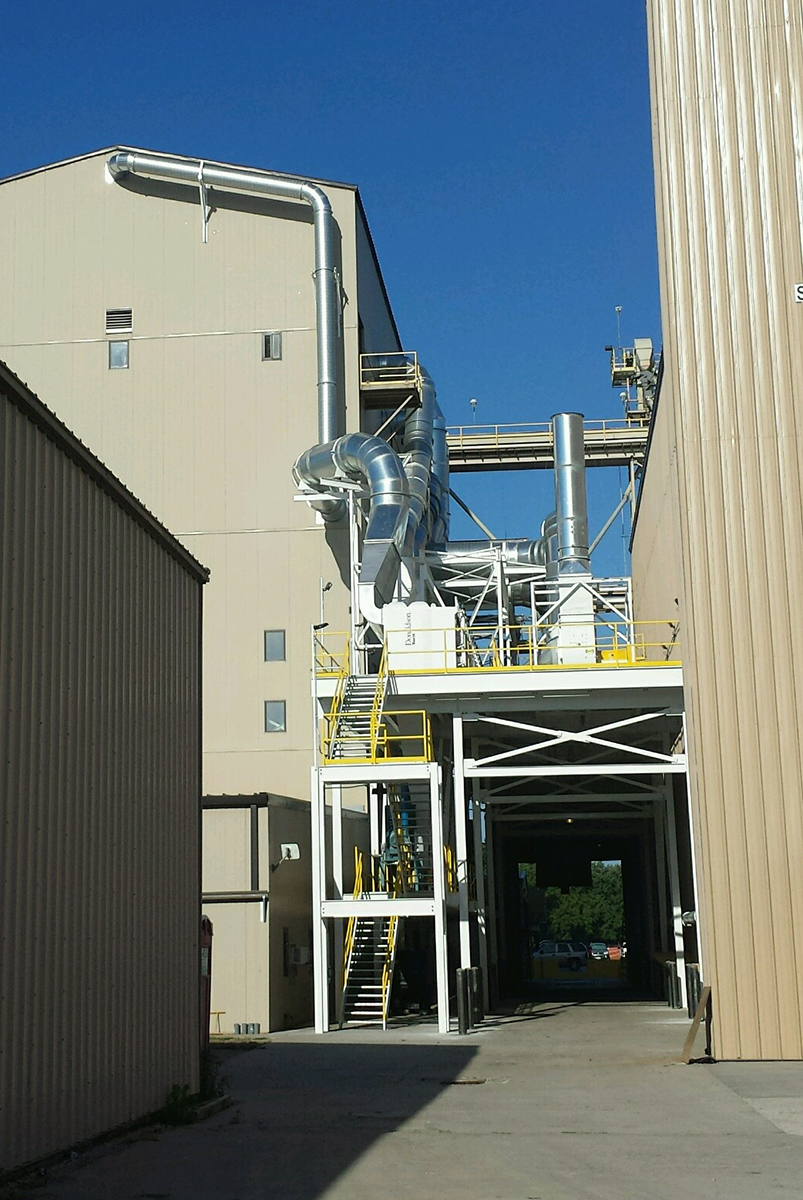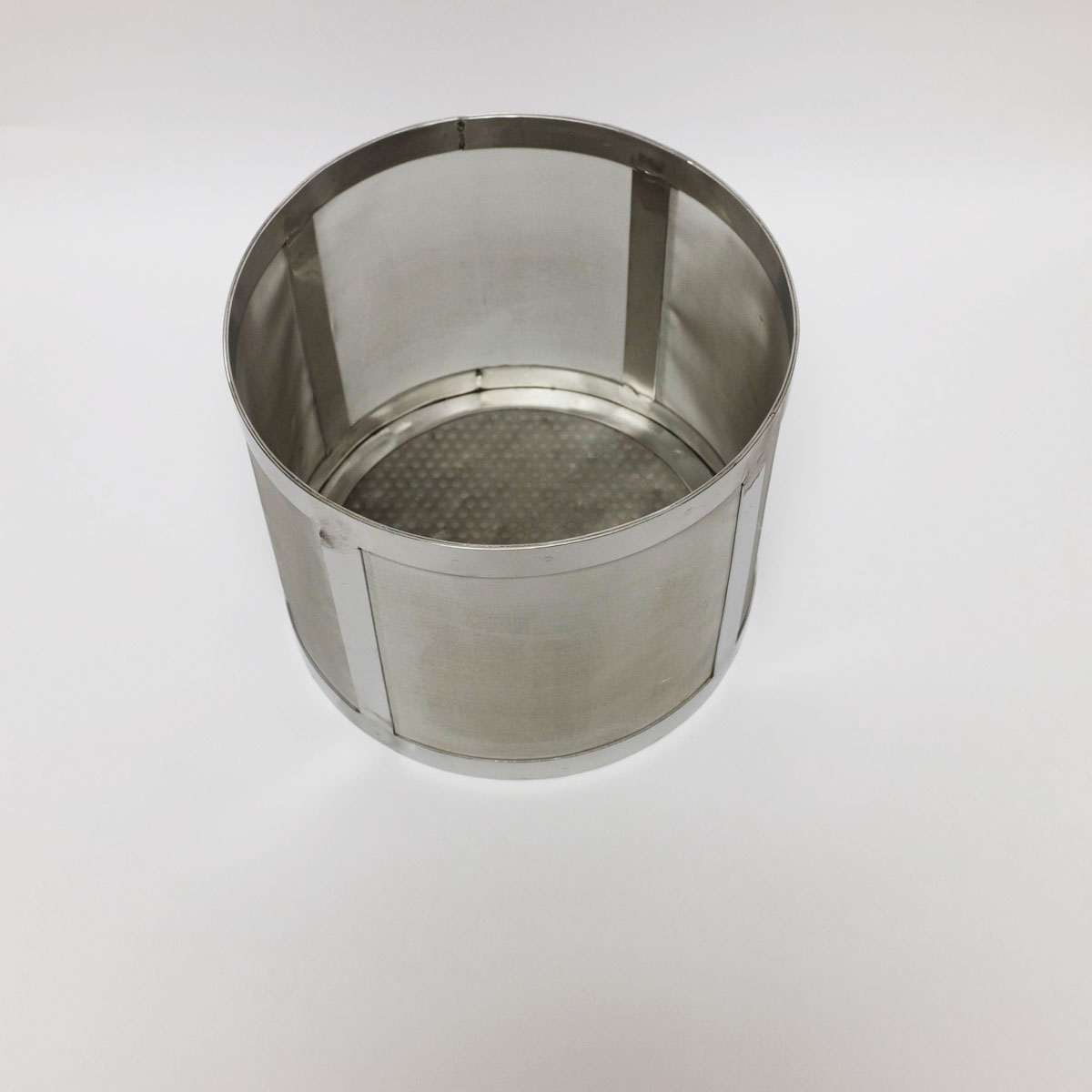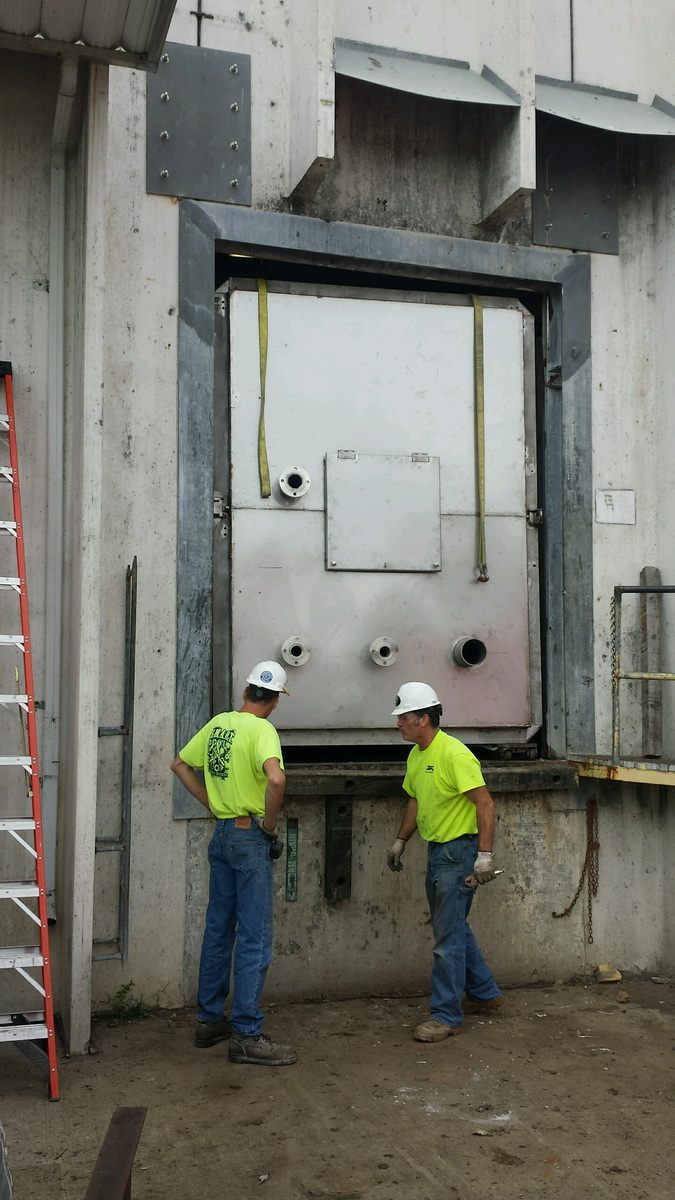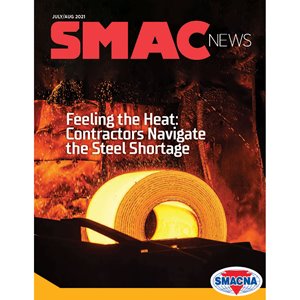Cooking Up Clarity
Bringing guidance to food processing industry projects was goal of new SMACNA guidelines.
Many contractors engaged to make “food grade” ductwork for food processing plants typically have lots of questions and few answers when it comes to figuring out exactly what clients are asking for: Are they following U.S. Food and Drug Administration or U.S. Department of Agriculture guidelines? Does the plant want to use stainless or hot-rolled steel? What type of finish do they want on the metal?
“‘Food grade’ is a hard thing to define,” said Mitch Golay, part owner and vice president of operations at Corn States Metal Fabricators Inc. in West Des Moines, Iowa. “Food grade at a seed-corn plant is not the same as food grade at a spice plant, and it is not the same as food grade at a dairy plant,” he said. For contractors, “it’s a different type of welding. It’s a different type of finish. It’s a different type of material.”
Bringing some clarity and standards to the subject of food grade ductwork fabrication and installation was the goal behind the “Food Grade Ductwork and Sheet Metal Guidelines,” recently published by SMACNA. Almost four years in development, it explains the different types of materials used in food processing facilities’ HVAC systems, what to consider when choosing them, and design best practices.
Golay was one of seven SMACNA members who assisted in drafting the guidelines. Roeland Hoeke of mechanical contracting firm H.T. Lyons Inc. in Allentown, Pa., was task force chair.
‘A hodgepodge’
Prior to the guidelines’ release, sheet metal advice for projects in the $750 billion food processing industry was typically cobbled together from existing SMACNA manuals, standards and papers that touched on the subject, Golay said. Publications from groups such as ACGIH, (American Conference of Governmental Industrial Hygienists), were also referenced.
“There’s been kind of a hodgepodge,” he acknowledged.
This publication aims to fix that problem, task force members said, by pulling together relevant information from SMACNA manuals as well as other highly regarded industry sources. The new guidelines encompass food processing regulations and standards; food grade ductwork and associated applications; materials; engineering and design; hangers and supports; welding; grease duct and flue venting; and in an appendix, mitigating combustible dust.
Spread over 11 chapters, the guidelines lay out common scenarios that sheet metal contractors, as well as engineers and system designers, are likely to encounter as they work on food grade duct projects.
Hoeke said the task force’s goal was to pool their collective industry knowledge and create a publication that would benefit the whole industry, with a special focus on assisting engineers who may find themselves working on food industry duct projects.
Aimed at contractors, engineering community
“We wanted to be able to take some of that knowledge and put it together in one spot. And that way we’d get a good reference publication not only for the members of SMACNA and sheet metal contractors, but also for the design and engineering community,” Hoeke said. “It didn’t seem like anything existed that covered all of what sheet metal contractors do within food and beverage plants.”
Other task force members contributed to the new “Food Grade Ductwork and Sheet Metal Guidelines,” including Corey Chestnut of Climate Engineers, Hiawatha, Iowa; Andy Kanaar of East Muskegon Roofing & Sheet Metal, Muskegon, Mich.; James E. Panarelli of United HVAC Co. Inc., Rockland, Mass.; Steve Shea of Newjac Industrial, Lebanon, Ind.; and SMACNA staff liaison Shawn O’Hara.
Hoeke’s company doesn’t have as many food industry clients as some sheet metal contractors based in the Midwest, or other task force members. But Hoeke, H.T. Lyons’ president, pointed out that many consumers have likely tasted items made in factories that are on its project list: marshmallow candies, jelly beans, chocolates, bread, pastries, soda, milk, iced tea and even beer.
“We’ve worked in confectionery facilities. We’ve worked in vitamin plants, bakeries, dairies, breweries and some water bottling companies,” he said.
But even if he hasn’t worked in the meat processing and prepared foods factories of the Heartland, Hoeke said that he’s always had a deep interest in the production process, which is why he really enjoyed learning more about the food processing industry as the task force drafted the guidelines.
Lack of standards
Being based in West Des Moines, Iowa, Golay’s company does a lot of duct fabrication and installation work in the corn and soybean processing facilities that dot the Midwest, which is why he was tapped by SMACNA for the food grade ductwork task force.
The lack of standardization in the food processing industry can make projects more difficult than they need to be, Golay said.
“We’ve done work for the same company in two cities that are 30 miles apart and they have completely different standards, which is ridiculous,” he said.
However, Golay pointed out that the guidelines aren’t attempting to be prescriptive. They still leave engineers and contractors with options to figure out what works best for the client and the facility. But hopefully, it will improve communication between both parties by helping contractors determine the right questions to ask and prompting engineers to provide clear answers.
“It basically says when we go through all the contents of the guidelines, ‘Here are some suggestions, but this is what we need from the engineer and the people at the plant who decide how this really works,’” Golay said. “So they can’t just say ‘food grade.’ They have to say, ‘No, no, no, we want stainless steel. We want hot-rolled steel. We want it fully welded.’”
Having that kind of information earlier in the planning and even the construction process can make for a better experience for everyone, Golay added.
Hoeke agreed. Having these guidelines would have been helpful for some of H.T. Lyons’ projects, he said. “In many past cases, we were not the engineer of record,” he said. “If we thought something didn’t look quite right, we could have pointed the engineer to this document.”
A common example, cited by Hoeke and Golay, is threaded rod, which is often used to hang ductwork and piping. Because it’s fully threaded, dust and debris can attach to the threads that stick out. Solid, unthreaded rod is usually a better choice in food manufacturing facilities, but not every engineer knows that.
“We can use this guideline to say, ‘Hey, I think you should be upgrading to something like this,’” Hoeke said.
Some parts especially useful
Working on the guidelines for so long, both Hoeke and Golay said they have parts that they’re especially proud of and believe will be the biggest benefit to the industry. For Golay, it’s the model specifications in chapters that cover items such as process exhaust, sanitary tubing and pneumatic conveying, and ductwork engineering and design.
Having specifications assembled together makes it much easier to ensure everyone knows what they’re doing, he said. “So the customer knows what they’re getting and we know what the customer wants,” Golay said.
Hoeke said he found several chapters to be extremely helpful for anyone wanting to get a better understanding of the intricacies of food grade ductwork.
“If I were to give this book to somebody and say, ‘Read this. Then you’ll know what we’re talking about,’ I would start with chapters four and five (“Food Grade Ductwork and Sheet Metal Applications” and “Duct and Sheet Metal Materials”). And then secondarily, chapter six (“Engineering and Design — HVAC Ductwork Serving Food and Beverage Production Process/Sanitary Areas”). … I think that four, five and six in the middle, that’s the meat of it.” Hoeke said.
And Hoeke said he’s proud of the guidelines and what the task force has accomplished in putting them together. “I believe that SMACNA, along with other U.S.-based engineering associations and building code groups, have set the standard for the world as far as building construction and facility construction quality.”
Task Force Participants: Corn States Metal Fabricators »
Published: September 3, 2021
IN THIS ISSUE
ARCHITECTURAL: Architecture Billing Index, A Key Indicator of Construction Spending
The COVID-19 pandemic threw the brakes on the economy in 2020, shuttering businesses around the world and throwing millions of people out of work.
Capitol Hill Update: Main St. Efficiency Act | Davis-Bacon | COVID Reimbursement | School Retrofits
SMACNA joined leading business and efficiency groups in supporting small business efficiency upgrade incentives that will be simplified with the Main Street Efficiency Act of 2021.
Cooking Up Clarity
Bringing guidance to food processing industry projects was goal of new SMACNA guidelines.
From the President: Guiding Resources
First it was the supply chain, then lumber prices, then steel…and now the COVID-19 Delta Variant is set to add a lot of uncertainty into the third and fourth quarters of this year.
How Leaders Can Build Enduring Resilience
We’ve all heard the phrase, “It’s a marathon, not a sprint.”
HVAC and Sheet Metal Companies Navigate Steel Shortage
For nearly two years, the Covid-19 pandemic has triggered shortages of consumer goods in unexpected places. There were runs on cleaning products and toilet paper in the early days. Sporting goods stores have seen their selection of bicycles and
HVAC: Top Southeast Pediatric Healthcare System Taps Three SMACNA Members for New Campus
The Southeast’s top pediatric hospital system, Children’s Health of Atlanta (CHOA), will soon have a new hospital campus that provides advanced care for kids.
INDUSTRIAL: Industrial Safety: TAB Contractor Recognized
Beginning work at a nuclear power plant last year — the first new reactor construction in the United States since the Three Mile Island accident in 1979 — SMACNA contractor Research Air Flo expected heightened safety requirements.
RESIDENTIAL: Google Ads are a Great Way for Contractors to Gain New Business
For many contractors, Google Ads is a complex landscape, but with a couple of tips and tricks to simplify the process, Google Ads can be a very effective tool to gain new customers in new ways.
The 6 Most Common Mistakes Estimating Teams Make — and How to Overcome Them
The estimation process is critical to the success of any given project, but it’s also a leading indicator of the overall health of your construction business in the long term.
Upgrading Your Pre-Qualification Process to Today’s Market Demands
The purpose of a prequalification process is to evaluate whether a contractor is qualified to bid on a specific construction project.
Welcome New SMACNA Members

